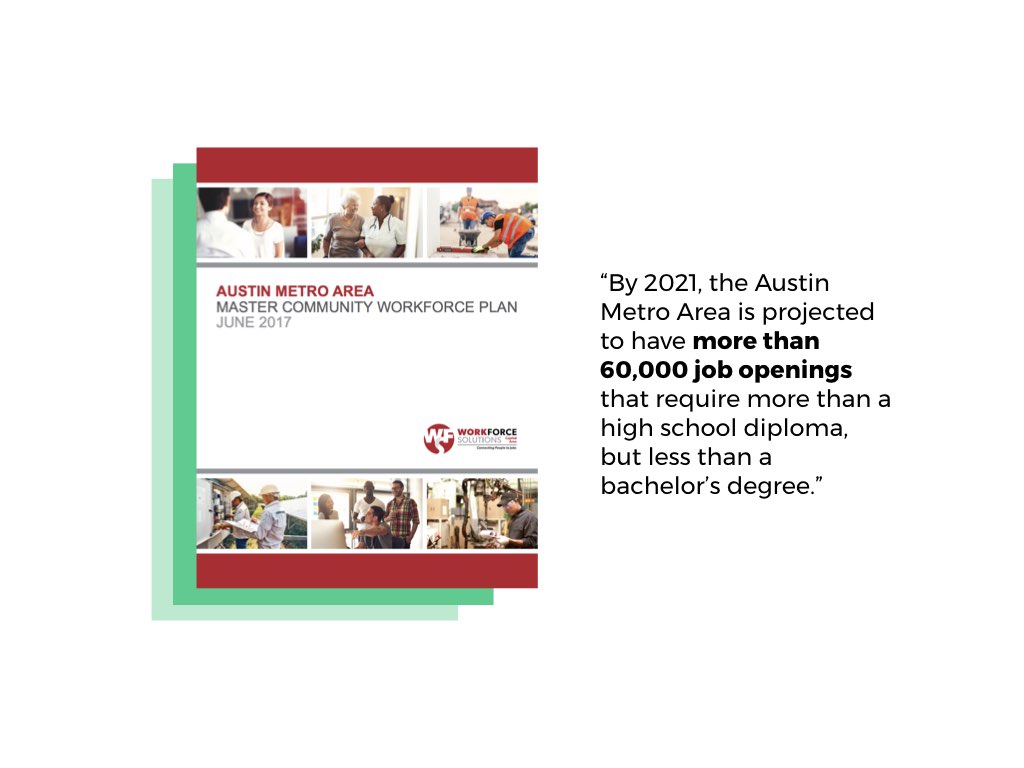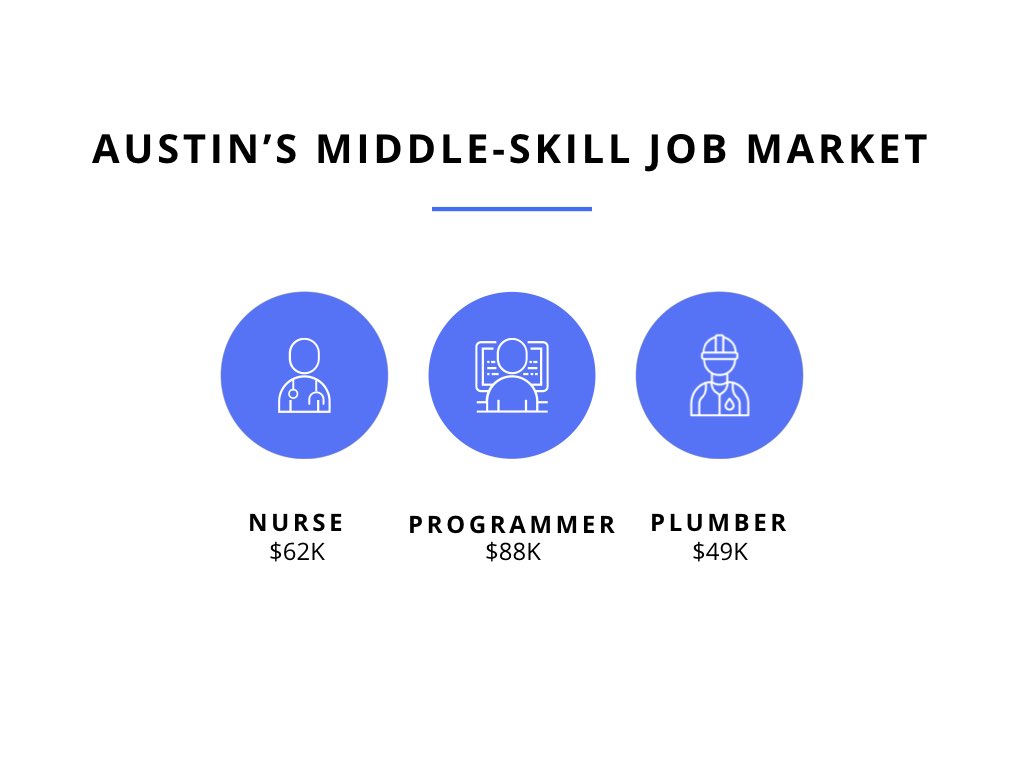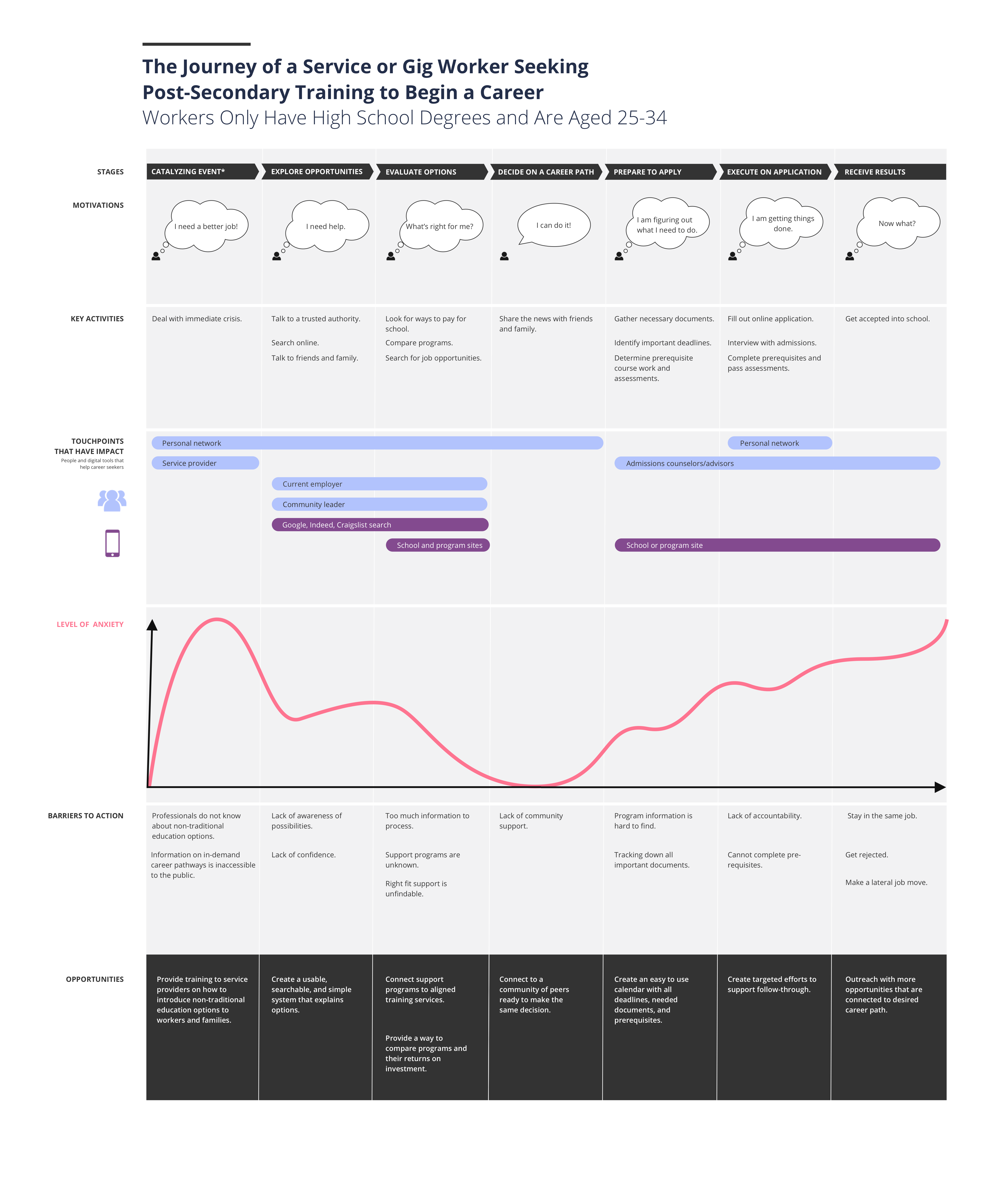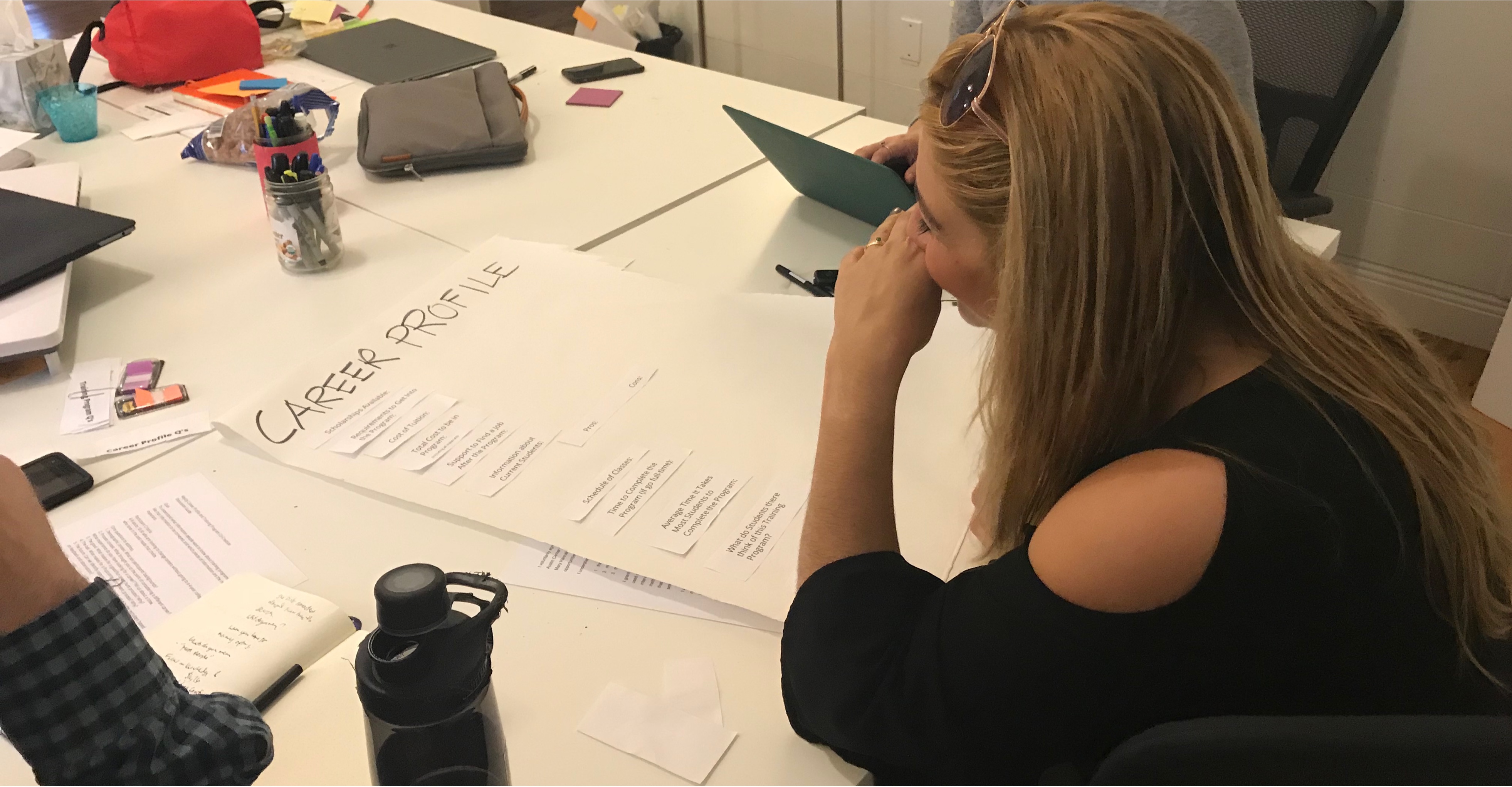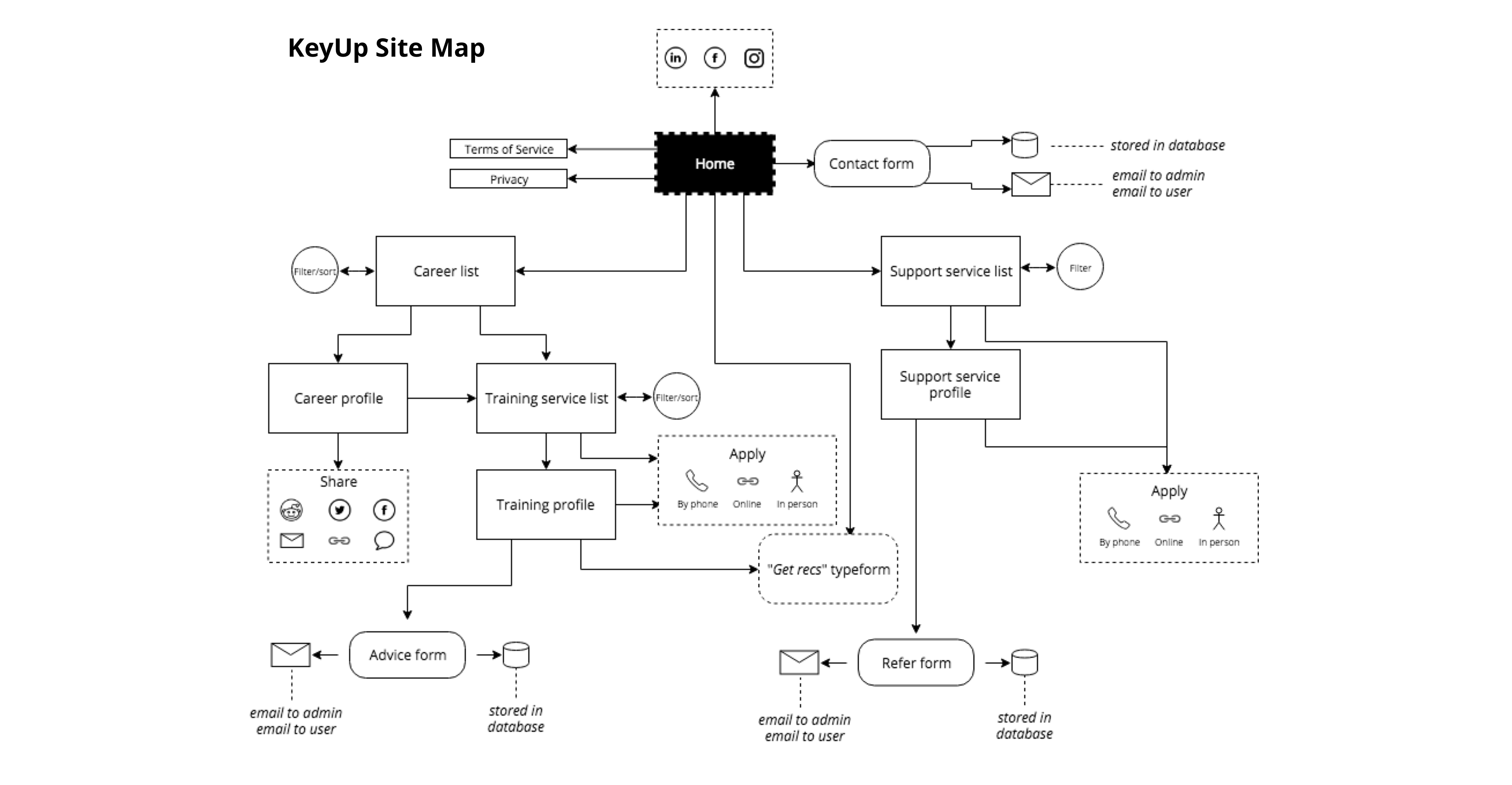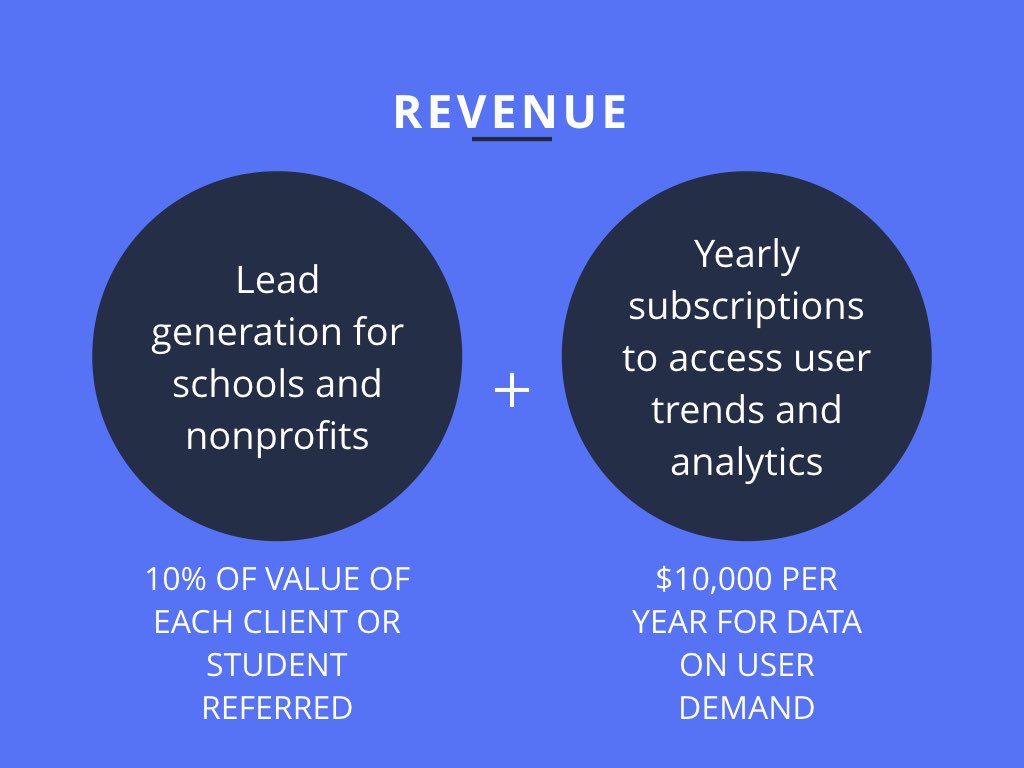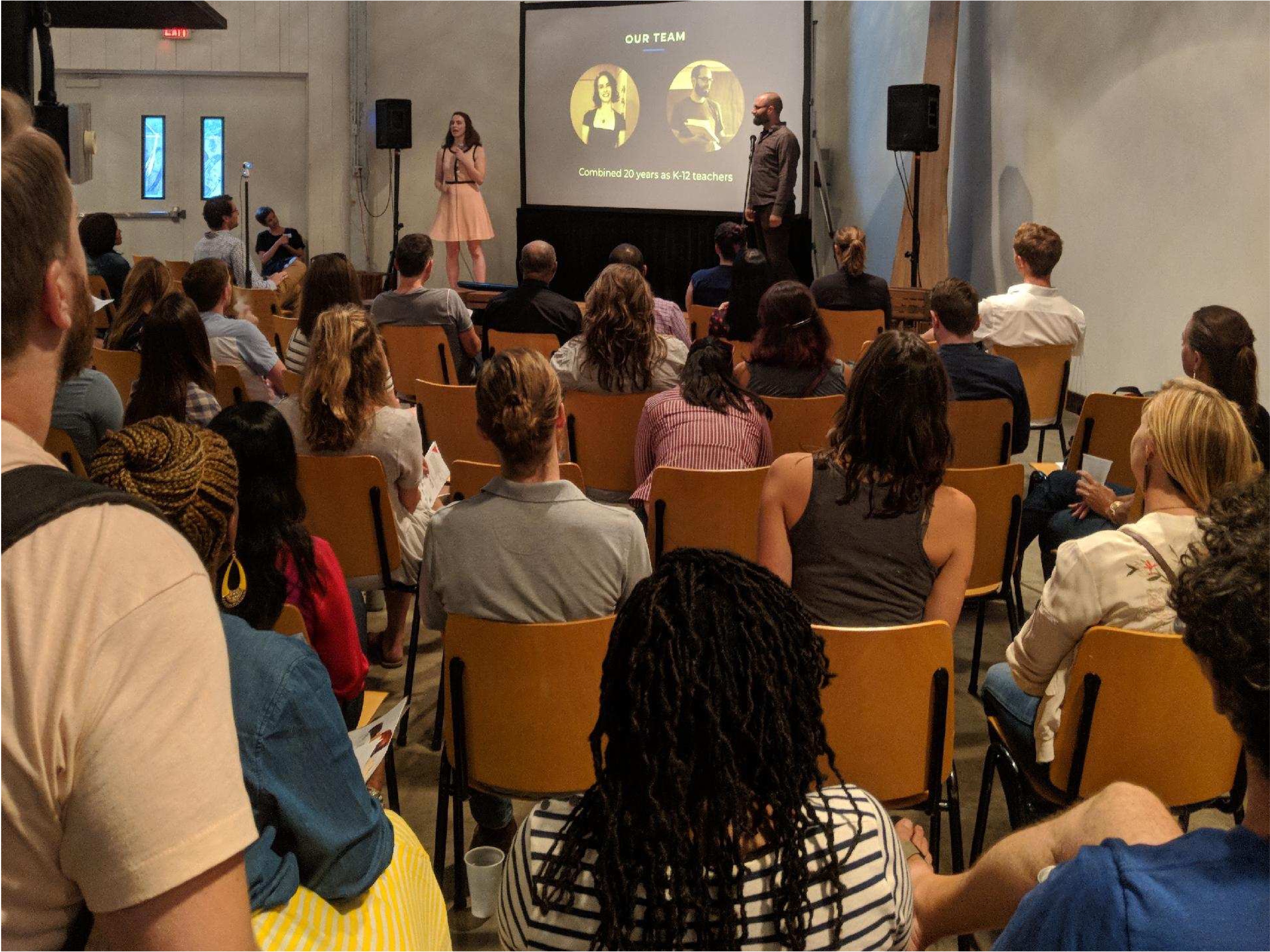RESEARCH | PRODUCT DEVELOPMENT | BUSINESS STRATEGY
RESEARCH | PRODUCT DEVELOPMENT | BUSINESS STRATEGY
KeyUp
Kayak for Careers
Kayak for Careers

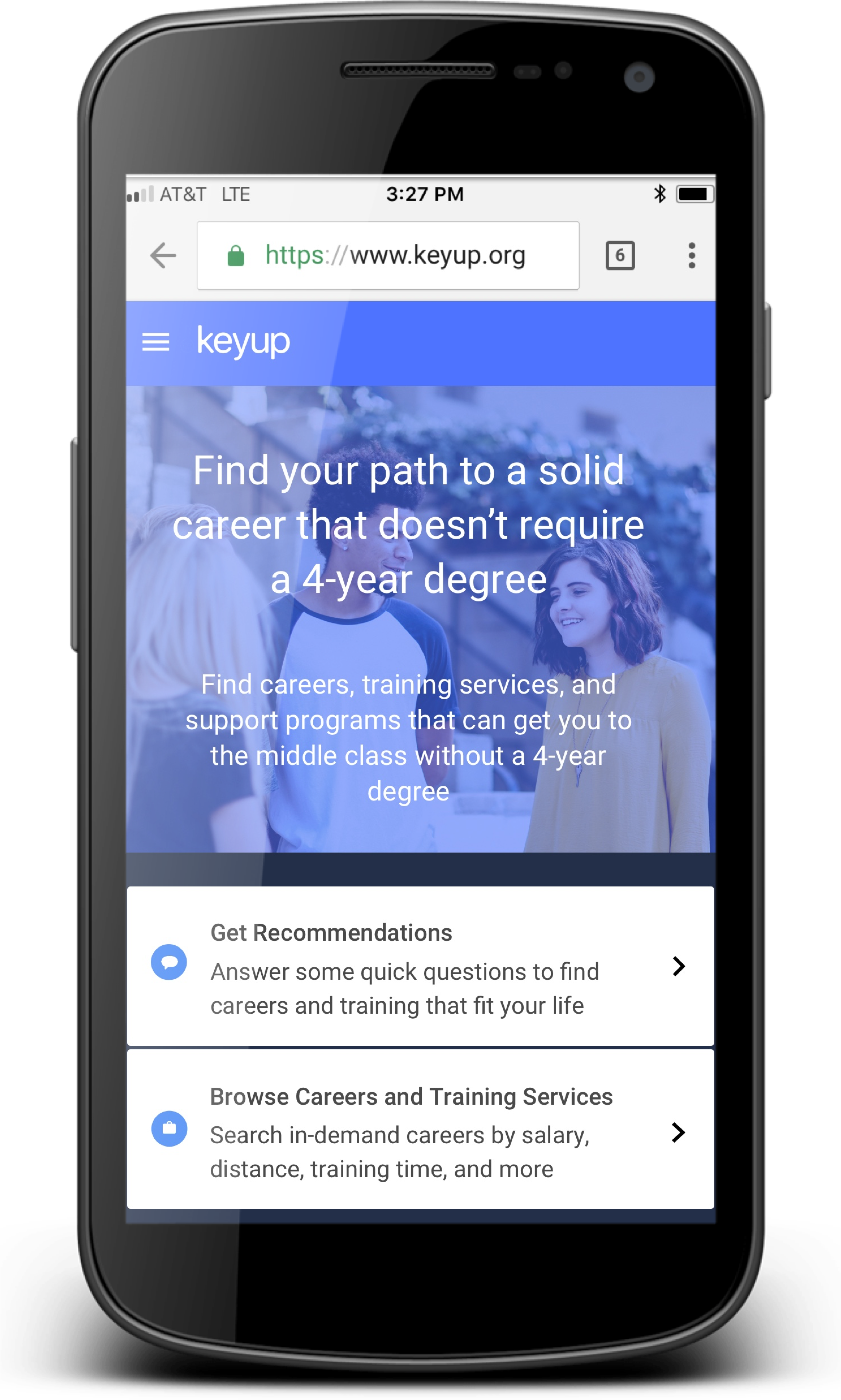
THE PROBLEM
Service and Gig Workers Need a Way to Begin Careers That Do Not Require 4-year Degrees
Summary
Young adults are graduating from high school ill-prepared for the future of work. They are trained to believe that the only path to the middle class is attending a 4-year school. However, the the majority of Americans who graduate from high school do not enter or complete 4-year degree programs.
Yet, awareness of alternative pathways to financial stability is limited. There are plenty of organizations trying to support workers to achieve more, but they lack coordination and a one-stop-shop, user-friendly platform. Users need a way to easily search in-demand careers, existing training programs, and the support services that help them to achieve their goals.
From research to its current iteration, this has been an on-going project that began in October 2017.
Young adults are graduating from high school ill-prepared for the future of work. They are trained to believe that the only path to the middle class is attending a 4-year school. However, the the majority of Americans who graduate from high school do not enter or complete 4-year degrees.
Yet, awareness of alternative pathways to financial stability is limited. There are plenty of organizations trying to support workers to achieve more, but they lack coordination and a one-stop-shop, user-friendly platform. Users need a way to easily search in-demand careers, existing training programs, and the support services that help them to achieve their goals.
From research to its current iteration, this has been an on-going project that began in October 2017. You can view our current product here: keyup.services.
My Role
My Role
I am a Co-Founder of KeyUp and have collaborated on research, project management, product development, business development and stakeholder management.
RESEARCH AND SYNTHESIS
RESEARCH AND SYNTHESIS
DISCOVERING OPPORTUNITIES
Prompted by a design brief on the current state of civic engagement in Austin, my team and I focused on llistening to young adults without 4-year degrees. We recruited research participants, designed co-creation actitivites, and utiltized ethonographic research techniques like co-creation sessions, immersions, and contextual inquiries. We conducted user interviews with 88 young adults and 25 workers throughout the workforce ecosystem.

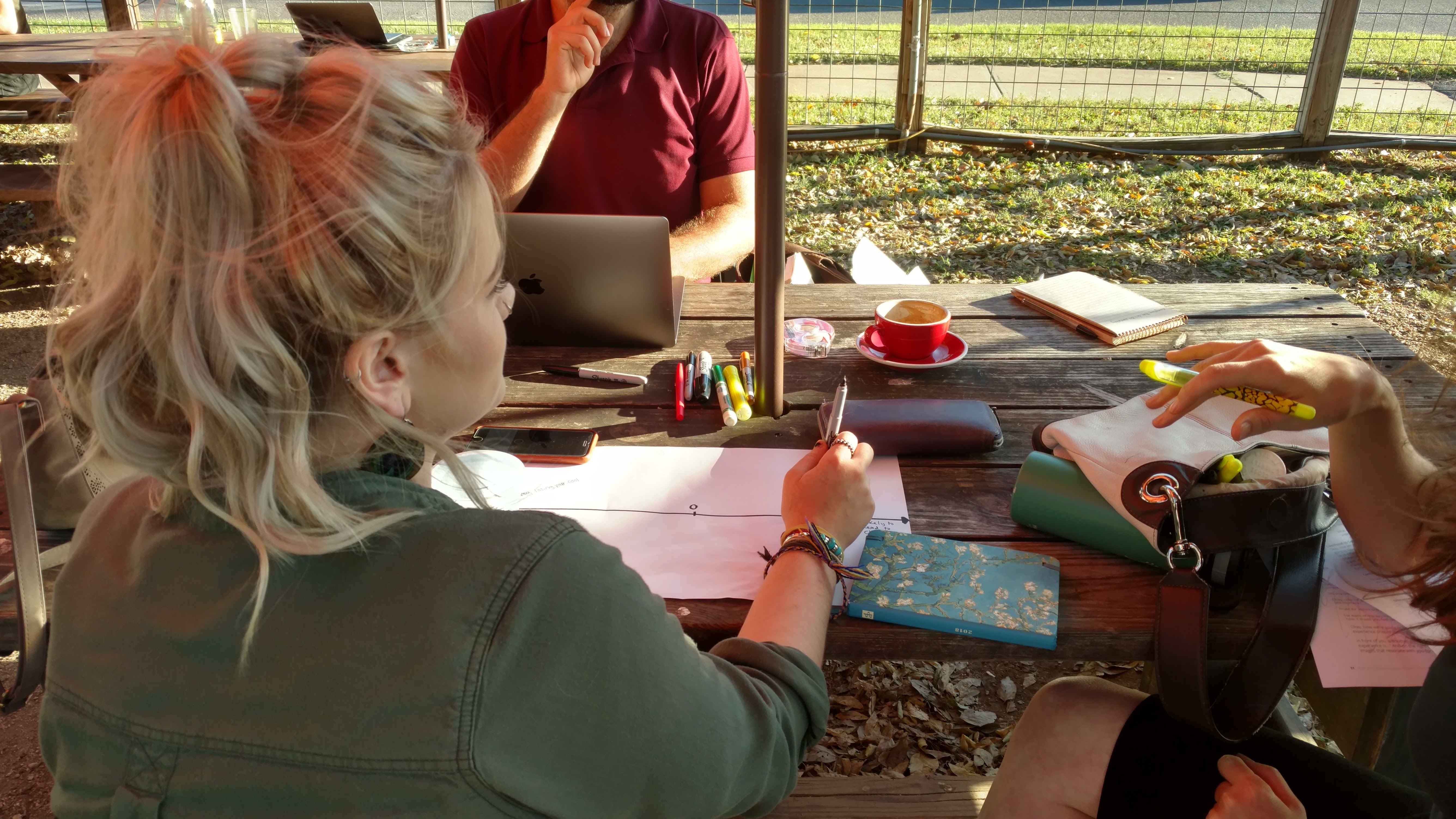

INSIGHTS
Through the synthesis process, we discovered several key insights that informed the development of KeyUp. Our insights started with our target user, and over time, we generated insights from the perspective of essential workforce stakeholders. We learned that young adults who don't have 4-year degrees:
- desire realistic career opportunities but fail to find them,
- are paralyzed by the shame of not earning a 4-year degree, and
- seek opportunities by leveraging their personal networks and through superficial online searches.
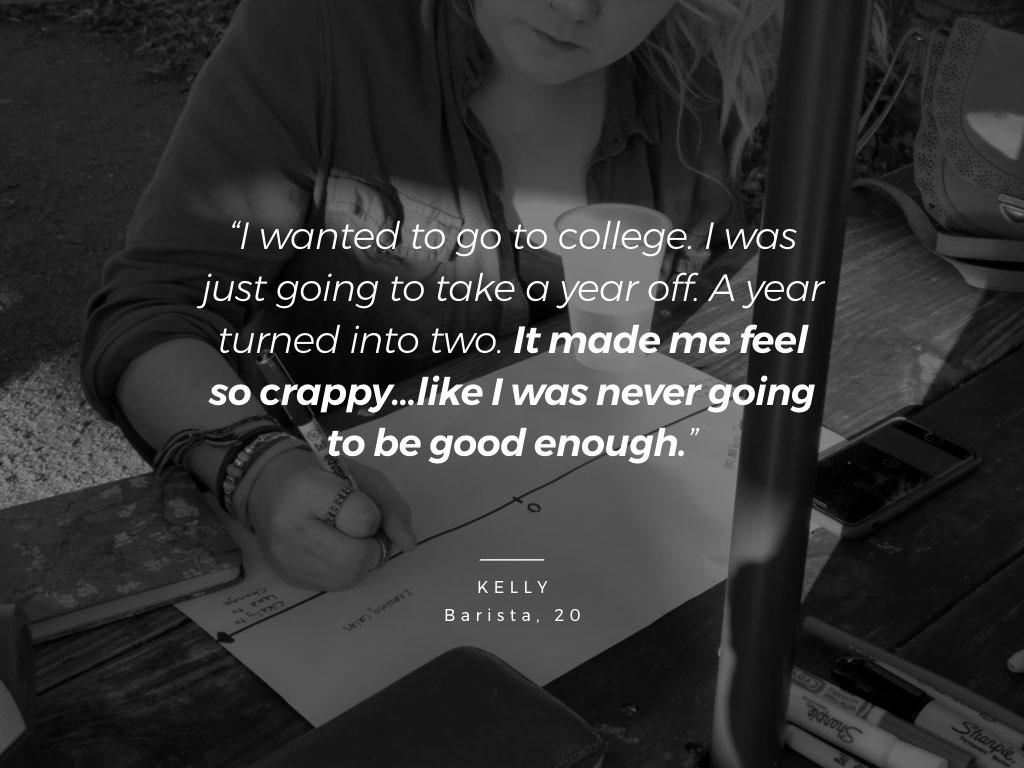
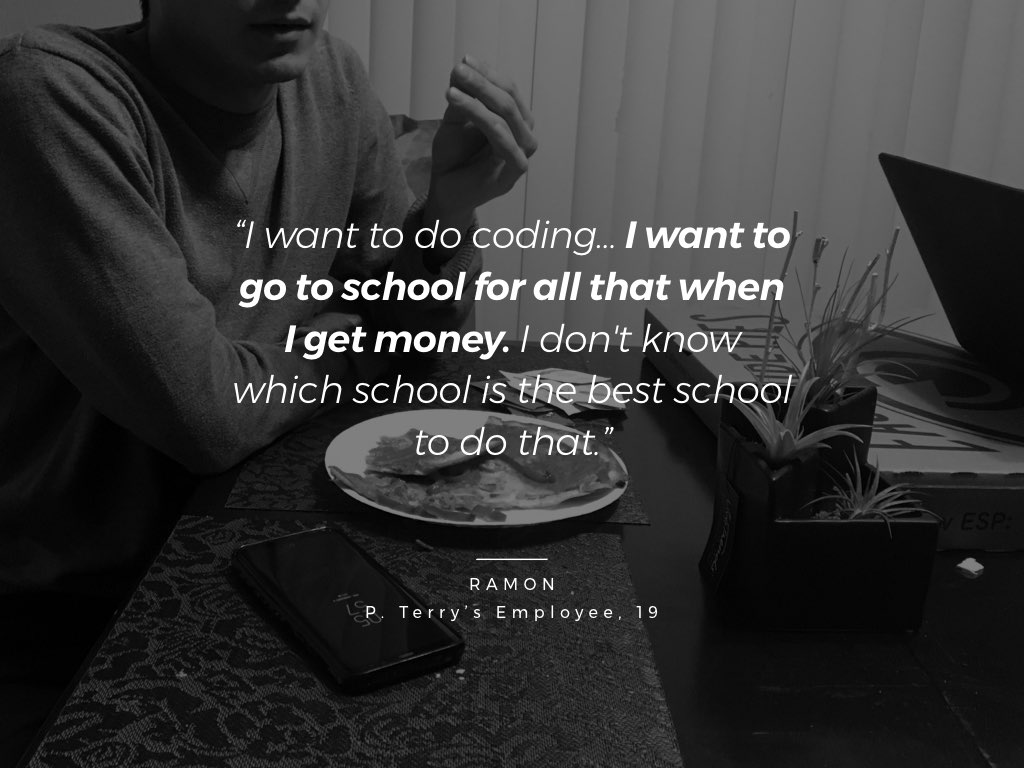
PUTTING IT TOGETHER
After interviewing 25 workforce service providers, subject matter experts, and doing extensive secondary research, we learned how to situate these young people in a larger context. Though our research participants were just scraping by, there are career opportunities for them. Therefore, we decided to focus our service on service or gig workers who are seeking post-secondary training to begin a career.
DESIGN FROM CONCEPT TO SYSTEM ITERATION
IDEATION TO PRODUCT DEVELOPMENT
Out of the generative research we conducted, we ideated on how we might build a system that could have a positive impact on the livelihoods of young people without 4-year degrees.
To do this, we worked through ideation to the conception of KeyUp. I contributed sketches of concepts, screens, systems diagrams, and user flows. Once we committed to the concept of KeyUp, we conducted co-creation sessions with target users. This was an opportunity to observe how they want to learn about careers.
TESTING TO LEARN HOW TO ENGAGE USERS
We then applied an iterative process in which we worked in increasing levels of fidelity from paper prototypes to an interactive prototype to a live site. We tested our service through multiple strategies including fliers, postcards, a landing page and Google ads.
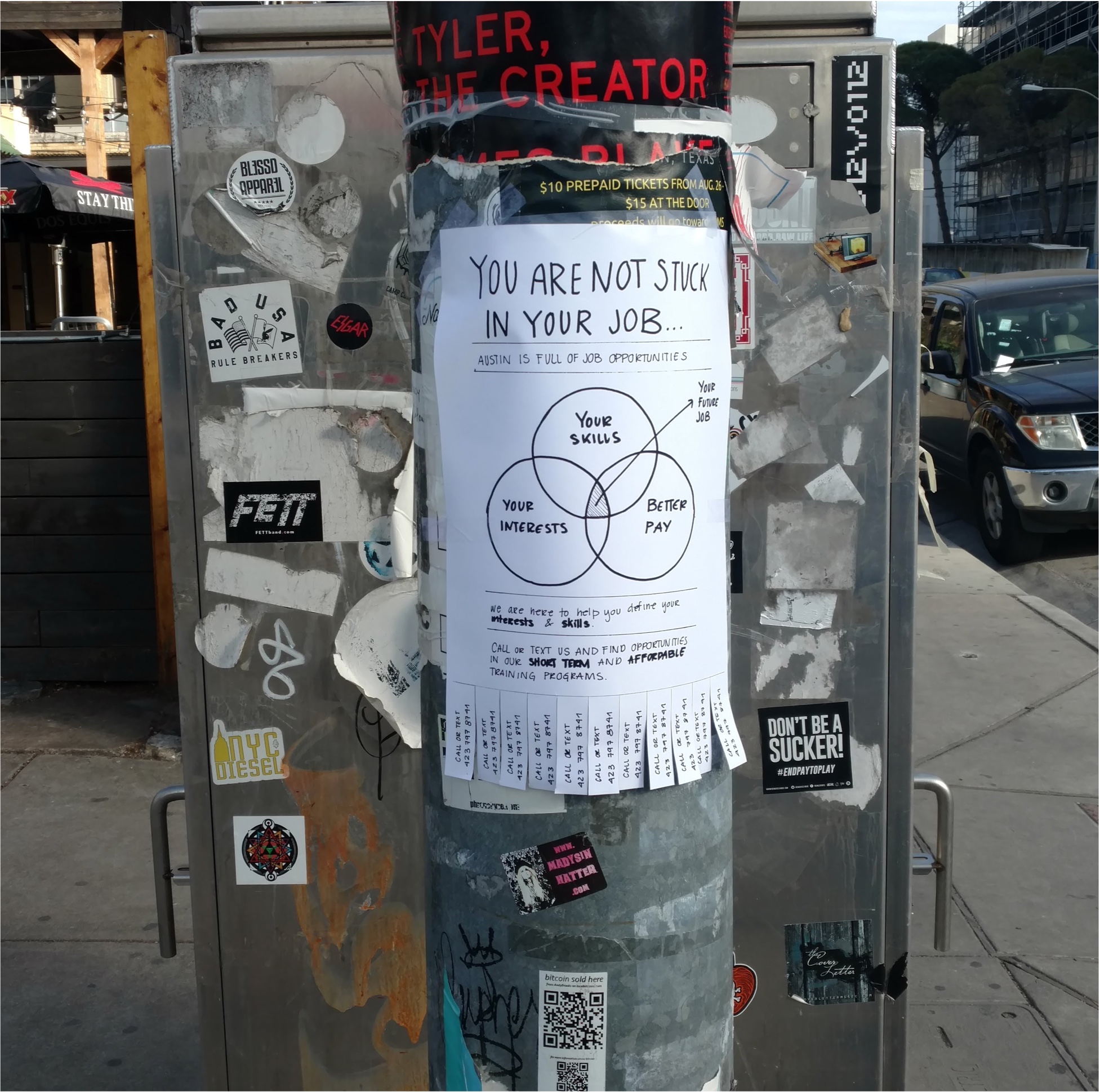
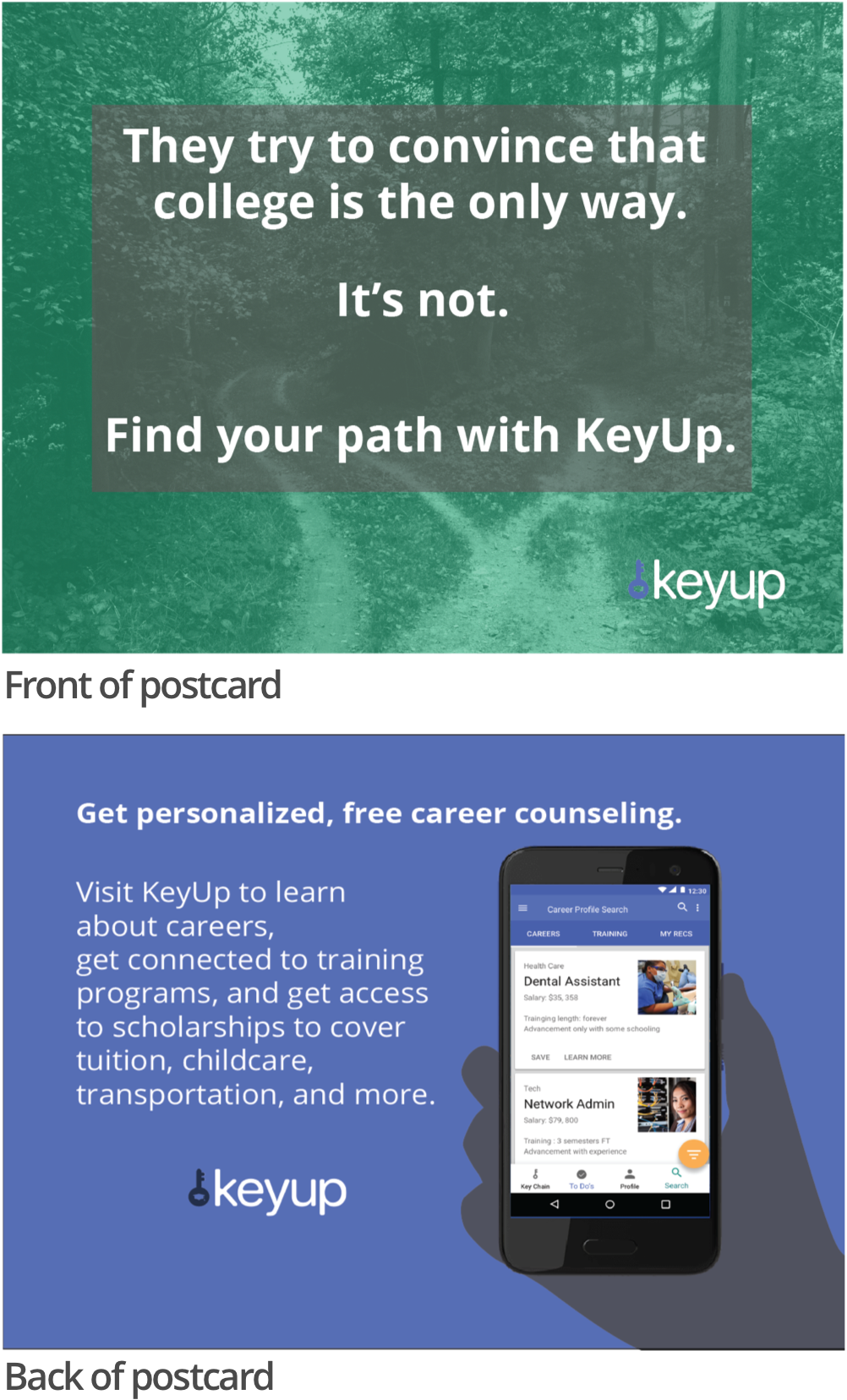
MOBILE-OPTIMIZED WEB-APP DEVELOPMENT
As we tested to engage our users, we also built out a product that would allow us to find disconnected young adults in the Austin community. It included free information on in-demand careers and their aligned training services. Once a user shared their contact information, we began high-touch counseling to learn what our users would need. We went through multiple iterations based on feedback and researched best practices. You can see the current iteration of our product here: keyup.services.
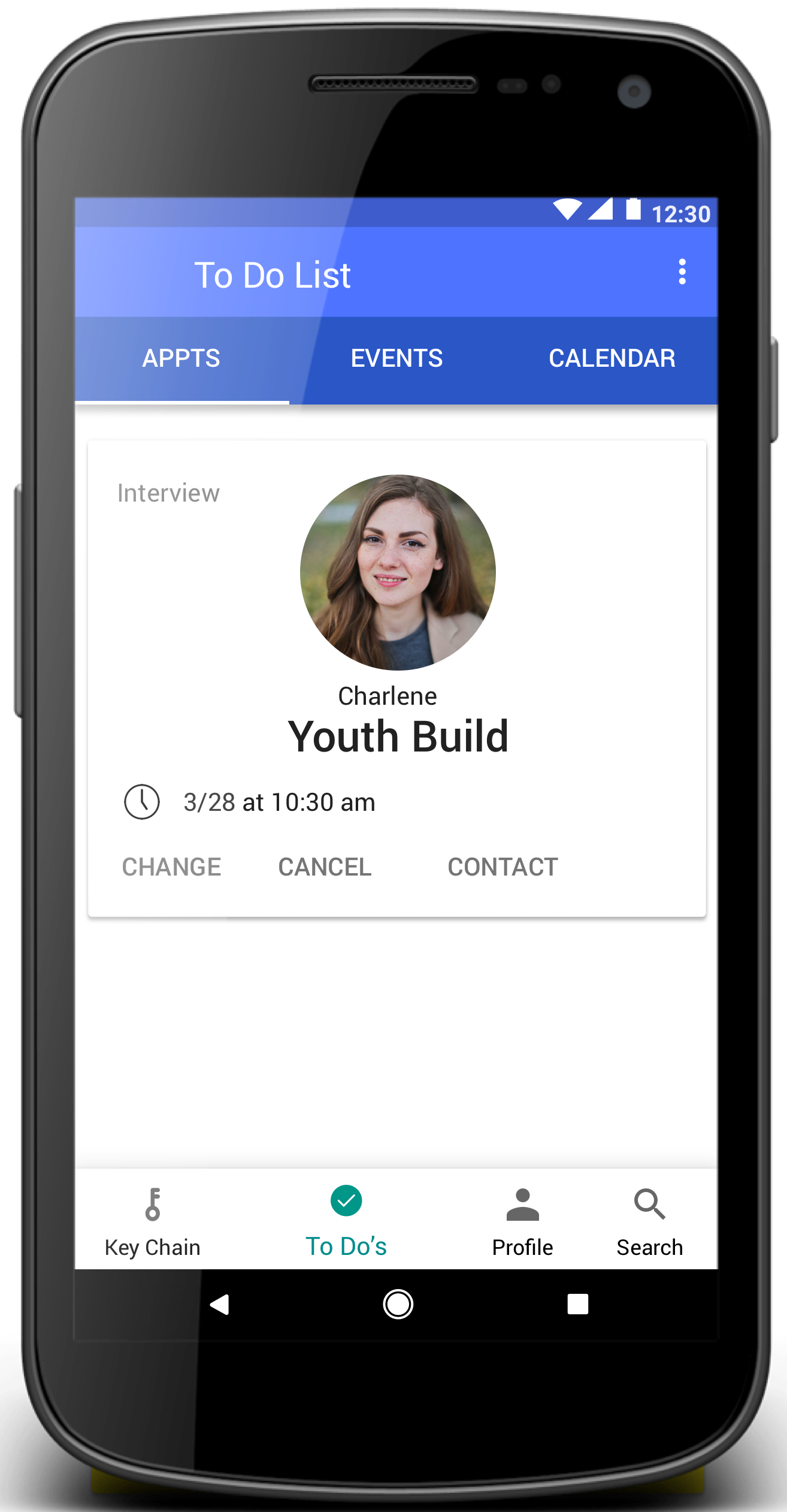
An early version of the KeyUp landing page
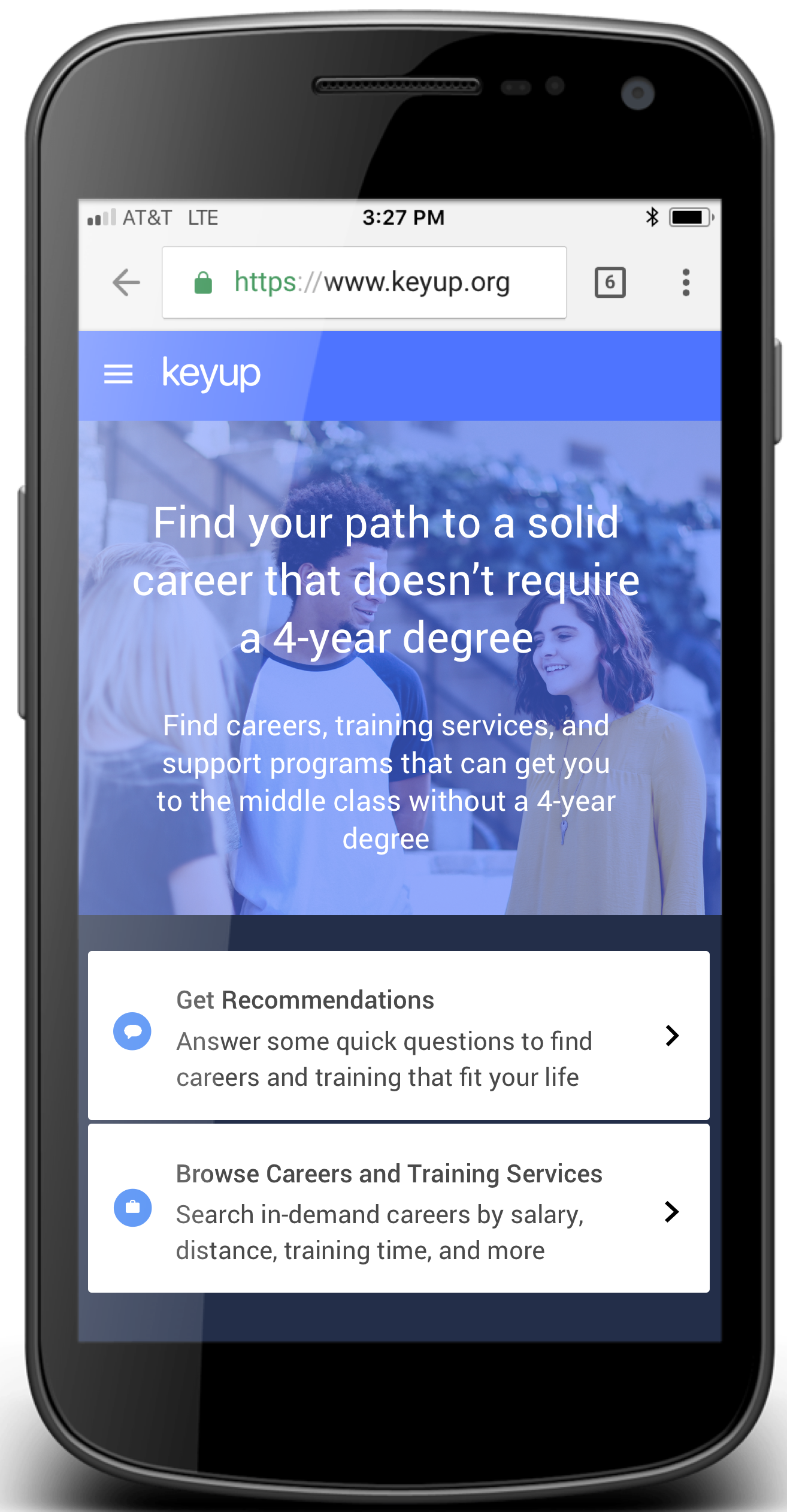
A later version of the KeyUp landing page that prioritized stating a value proposition and getting users to go through our "Get Recommendations" flow

The most recent version of the KeyUp landing page that prioritzes capturing emails and social proof
BUSINESS DEVELOPMENT AND STRATEGY
BRINGING AN IDEA TO LIFE
The design of a system is just the beginning of bringing software to life. As important are sales, marketing, and the perfect pitch. KeyUp’s business development tells a story of searching for the appropriate customer, and how to build a network of key influencers.
Team KeyUp was accepted into an accelerator, pitched to investors, stakeholders, and customers numerous times. We conducted co-creation sessions within the workforce ecosystem to help determine our strategy as well gain system-wide buy-in. We iterated on our business model, honing and testing out possible subscription models, and performing market analysis to determine opportunity.
As CEO, I focused on sales and partnerships to bring in revenue and build out our team.
RESULTS BY THE NUMBERS
Through the ongoing development of KeyUp, we have
- employed 5 designers and 3 developers,
- currently established 5 letters of intent to purchase the use of KeyUp subscriptions,
- built a following of 568 influencers and stakeholders,
- have established a marketing partnership with the local PBS station,
- completed our first accelerator,
- begun negotiations with the local workforce board to run pilots with case managers and clients,
- raised $22,000 through a friends and family round, and
- facilitated 10 career seekers to apply for an upskilling opportunity.
LESSONS I LEARNED
Build in routines to get feedback early and often. You never know when there will be a sudden rush of person power or money, and your system has to be good to go right away.
- Build in routines to get feedback early and often. You never know when there will be a sudden rush of person power or money, and your system has to be good to go right away.
Lasting change takes a lot of time, effort, and an enormous amount of buy-in from a huge number of people. Internal patience and financial resources are a must.
- Lasting change takes a lot of time, effort, and an enormous amount of buy-in from a huge number of people. Internal patience and financial resources are a must.
Building trust with users requires a real community of supporters who can speak to your success. It doesn't matter how good your intentions are.
- Building trust with users requires a real community of supporters who can speak to your success. It doesn't matter how good your intentions are.
Copyright 2019 Adam Chasen
